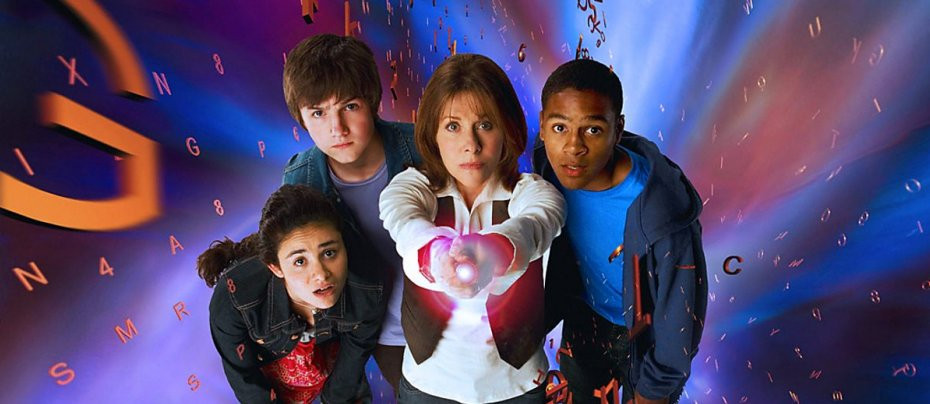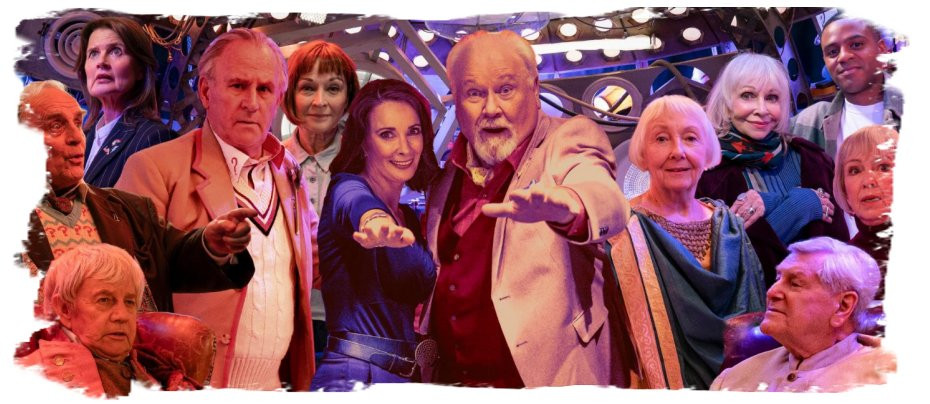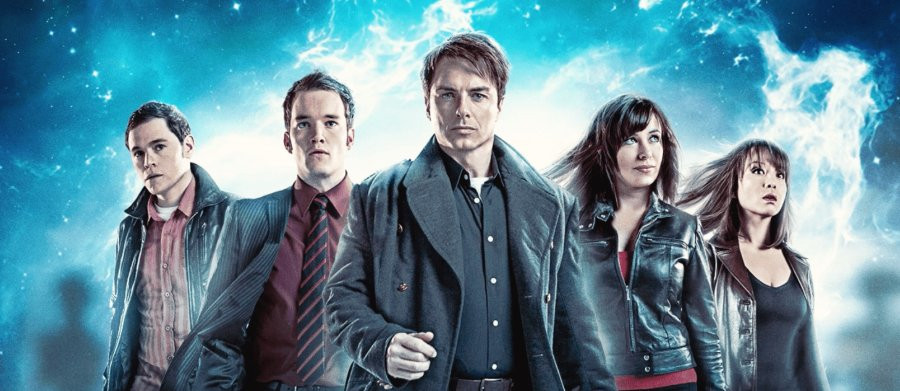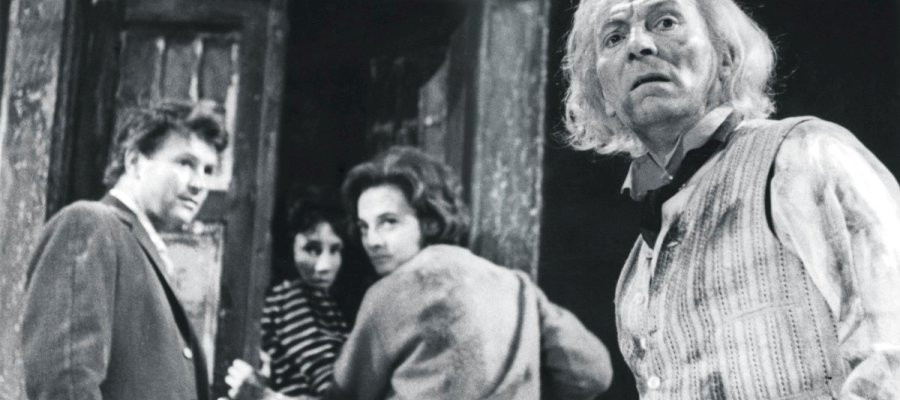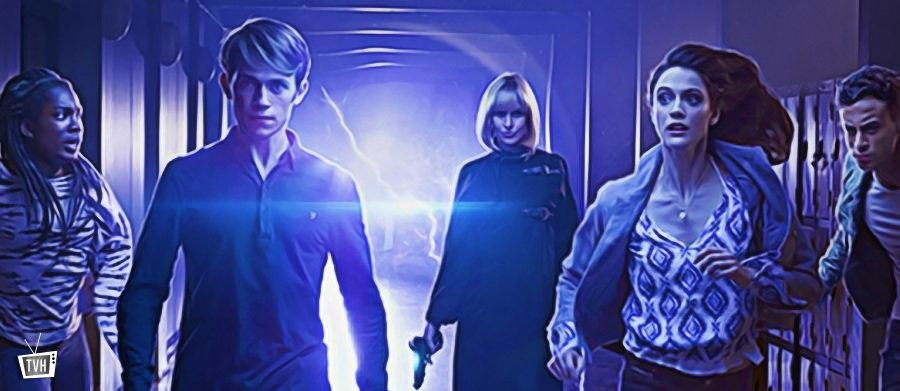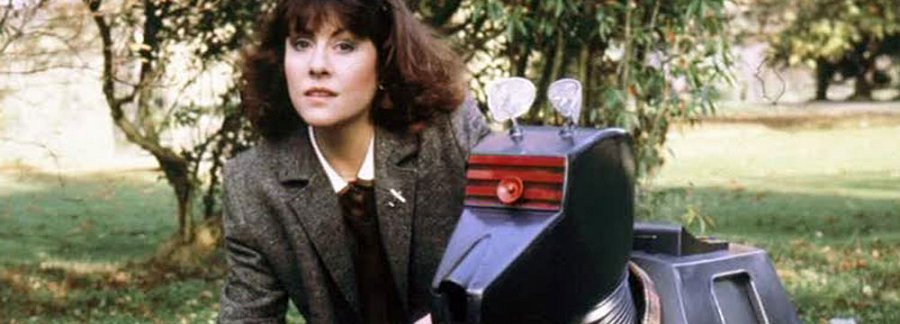History and Fiction:
The televised Doctor Who’s of Christopher H. Bidmead
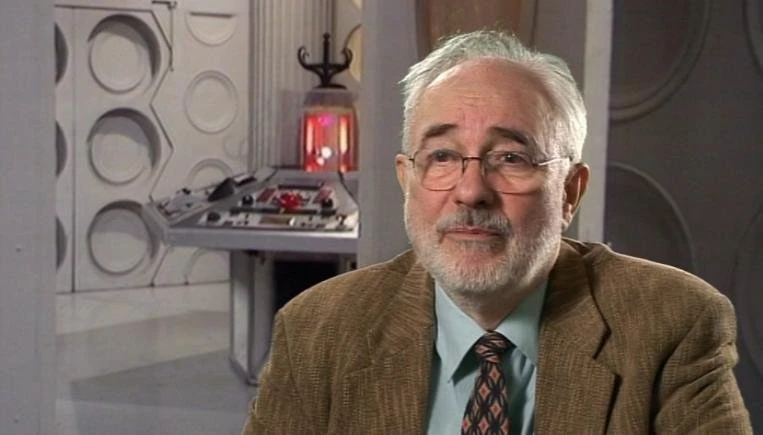
By Andrew O’Day and Lewis Baston
This article focuses on the theme of history and fiction as it is played out in the televised Doctor Who’s written by Christopher H. Bidmead. Indeed, while the third and final televised serial that Bidmead wrote, ‘Frontios’ (1984), differs from ‘Logopolis’ (1981) and ‘Castrovalva’ (1982), in that it is a ‘monster story’, there are connections between them. We also see comparisons between those serials written by, and those edited by, Bidmead. Many other studies of authors of literature, film and television detect authorial ‘signatures’ (for instance, see MacDonald, 1994 and Murray 2007 on Robert Holmes; Bignell and O’Day, 2004 on Terry Nation; O’Day 2020 on Eric Saward). We see, then, drawing on the method of structuralism, how a signature can also be attributed to Bidmead, whether this was intended or not, and even though some work was a collaboration between writer and script-editor. This article takes a different approach to Paul Booth’s (2014) on the dangers of periodising Doctor Who and fits in with Dave Rolinson’s (2007) examination on the discourses of authorship in the John Nathan-Turner era of the programme.
All fiction is falsified history to a degree; it is a record of things that did not happen, or which may have happened but the author cannot possibly have known. Take a novel such as Don deLillo’s Libra (1988) with its access to the internal monologue of Lee Harvey Oswald, which counts as fiction; but where does that leave non-fiction biography and history that performs similar manoeuvres? This takes us into the terrain of postmodernist ‘historiographical metafiction’ which, Linda Hutcheon points out, calls attention to the subjective writing of history; history, argues Hutcheon is ‘discursively structured’ (1988: 120). Examples of this type of metafiction were raised earlier by Frederick M. Holmes (1981) and Raymond A. Mazurek (1982) – Holmes argued that John Fowles’ British novel The French Lieutenant’s Woman (1969) has the narrator make self-reflexive references and imitates the Victorian novel, while Mazurek analysed Robert Coover’s 1977 American novel The Public Burning, a fictionalised account of the Rosenberg case told largely from President Richard Nixon’s subjective point of view. Mazurek points out that such novels differ from the traditional historical novel defined by George Lukacs, which aims to present a total model of a society, and they imply that not only is the ‘realistic novel…a series of conventional signs masking as reality, but that history itself depends on conventions of narrative, language and ideology to present an account of “what really happened”’ (1982: 29). Mazurek further refers to Frederic Jameson who pointed out that history is inaccessible to us except by traditional texts such as books (1982: 30). History, as noted by media critics like Pierre Sorlin (O’Connor, 1990) and Patricia-Ann Lee (O’Connor, 1990) also reflects the biases of the person doing the recording.
Castrovalva, featuring an author figure and readers, is a metafiction of a different kind since it does not reflect on history in our world. It may have been influenced by Italo Calvino’s If on a Winter’s Night a Traveler (1979) and by Umberto Eco’s The Name of the Rose (1980). Its history has the trappings of antiquity but is a contemporary artefact, and in this as well as its content it does resemble nationalist historical narratives. Nationalism as an ideology was largely created in the late 18th and 19th Centuries, and nationalist history was written in that era by intellectuals and its literary language and emotional currents were distilled by poets and artists; it did not arise from below, although popular myth was selectively used as raw material for the national narrative. Institutions were established to propagate the national version of history. National histories were the product of conscious processes of invention and could not be taken literally as a description of events in times gone by. In this respect, Castrovalva, which concerns origins, is not unlike the majority of political communities.
THE DOCTOR: The fiction of Castrovalva. A civilisation evolving out of tribal warfare into an ideal community. It is a fiction.
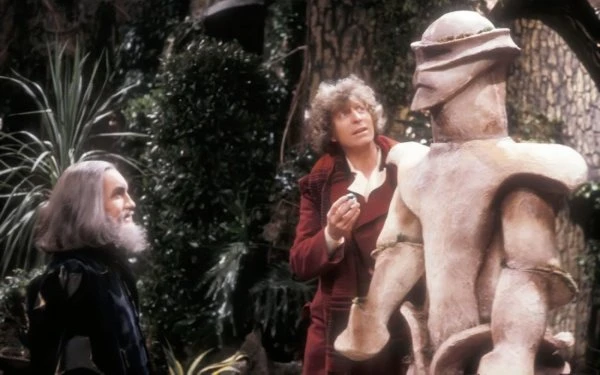
That particular fiction resembles many national histories, but it is perhaps closest to the myth of the foundation of Switzerland, an ‘ideal community’ in its wealth, multiculturalism, tranquillity and peaceful outlook. The idea of previously warring tribes forming a pact is pure William Tell. But both the contemporary reality and the national myth of Switzerland are creations of the mid-19th Century. The Castrovalvan myth of origin is similar to that of the Traken Union in the Bidmead-edited serial ‘The Keeper of Traken’ (1981) – a voluntary confederation of communities running on peace and goodwill. In-story, the similarity may be because Adric’s computational power is being exploited to create Castrovalva and Traken is one of few alien societies the Alzarian has experienced. In scripting terms, the existence of a harmonious and superficially uncomplicated society supported by problematic advanced technology is found in three successive stories with Bidmead’s creative input: ‘The Keeper of Traken’, ‘Logopolis’ and ‘Castrovalva’. But there are, for instance, differences between ‘Traken’ and ‘Castrovalva’: at the beginning of ‘The Keeper of Traken’, in a metatextual way, the Keeper acts as a narrator telling the Doctor the history of Traken (showing events on the TARDIS scanner which merges with our television screen) but this is a true history of the harmonious planet. This harmony is disrupted by The Melkur/The Master who resides in the grove rather like the Evil in the Garden of Eden and is similar to the Master’s disruption of harmony in ‘Castrovalva’ – and indeed in ‘Logopolis’. Conversely, in the Bidmead-edited serial ‘The Leisure Hive’ (1980) the present tranquillity – though threatened - is borne out of a catastrophic war between two races 40 years previously and so a lesson is learnt from ‘real’ history.
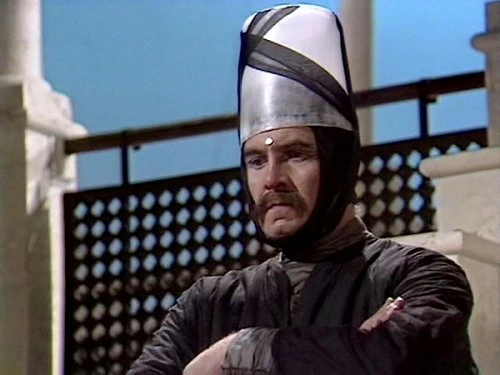
Castrovalva has boundaries. It is a world cut off from the rest of the universe, therefore having its own history which turns out to be fake. As the above discussion exemplifies, origins are crucial to ‘Castrovalva’ and the Castrovalvans act out roles which are prescribed by the ‘official’ history. There is the recreation of the Castrovalvans taking place in the hunt (the first we see of them) and the line about the garments being relics of their ancestors. But the serial deals with another type of origin: the existential theme of the Castrovalvans being creations of the Master most of whom are unable to perceive their place in the universe as they are part of Castrovalva rather than looking down on it. However, Shardovan realises that all is ‘amiss’ and his intelligence would not permit him to be persuaded to be part of the hunt. Indeed, Shardovan states that he admires an open mind since his own is closed upon the opinion that he is Shardovan whereas it is his mind that is open as to the fake origins of Castrovalva and his identity.
Shardovan’s role in relation to the national narrative is key. While the 19th Century intellectual constructed the national narrative, the late 20th Century academic deconstructs it. Shardovan takes a questioning approach to what he reads and annotates the volumes of the History of Castrovalva, the books of which are old but chronicle the fabricated rise of Castrovalva to the present day.
A library is a fountain of knowledge which can contain factual and fictional genres. The volumes of the History of Castrovalva may appear to be in the factual genre but the history is in fact fictional and the Doctor’s and Shardovan’s getting to know Castrovalva is not to know what is written on the page and accept this as factual but rather know that this history is invented.
Of significance is the issue of who has recorded this history. As noted, it is the Master who creates the Castrovalvan world and its fake origins to be found in the volumes contained in the library. But there is a deeper point to be made here. In our world, historical narratives contain the biases of those doing the recording, as suggested in the national narratives of Switzerland, and it is our job, just as it is the Doctor’s and Shardovan’s, to read deeply.
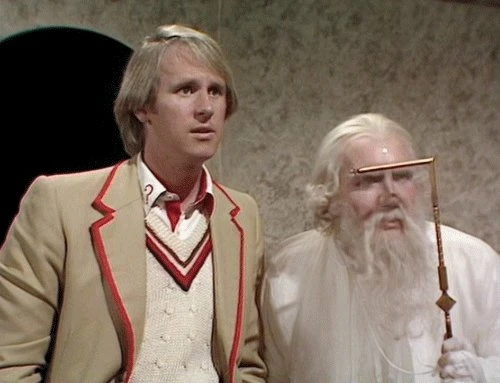
The presence of the character of the Portreeve lends the Castrovalvan society an olden feel and, indeed, Martin Wiggins (1995) has written about the collapsing of binaries where although the world has the appearance of being old it is in fact brand new. ‘The Portreeve’ was the title given to the magistrate of port towns in Norman England and here acts as ‘doorkeeper’ to the Castrovalvan world (as the title composed of porte and reeve suggests). But this olden feel to the Castrovalvan world is fake just as is the Portreeve who is the scientific Master.
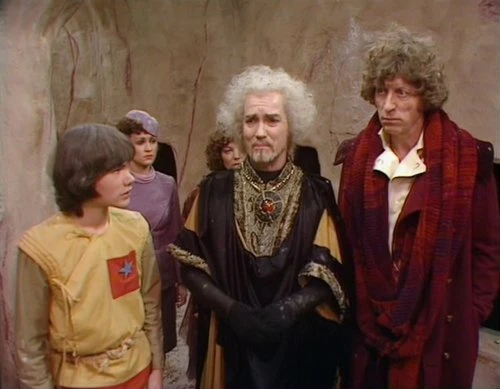
A theme in Bidmead’s televised work for the programme is that the repositories of knowledge are corrupted. This was evident in ‘Logopolis’ where the corruption of the Logopolitan calculation by the Master damages the TARDIS and extends to ‘Castrovalva’ where, at the Master’s command, the projection of Adric enters the false existence of Castrovalva into the TARDIS Data Bank for Nyssa and Tegan to discover. The presence of the TARDIS Data Bank reflects Bidmead’s interest in computers and is where presumably facts are stored, however as with the volumes of the History of Castrovalva those facts are phoney. The Master is an enemy of facts and of rationality itself. Castrovalva is an anti-Cartesian world in at least two respects: its geography defies the Cartesian system of mapping points uniquely onto mathematical coordinates, and its metaphysics subvert Descartes’s most famous dictum underpinning rationality: ‘cogito ergo sum.’ The paradoxical Castrovalvans, Shardovan in particular, think but they do not exist. Castrovalva is gnostic: ‘You created us, Man of Evil, but we are free’ in Shardovan’s words.
Significantly, what is delivered to the Master towards the end of the serial is not - as he believes - the Doctor inside the Zero Cabinet but rather the volumes of the History of Castrovalva. These come tumbling down to the ground, signifying the way that the façade of Castrovalva and its fake history collapse. The world is revealed to be constructed out of hard science and held together by a web which lies behind the tapestry, ripped by the Doctor. This web is broken by Shardovan (the ‘shard’ in his name suggesting breaking into pieces) when he swings into it on a chandelier.
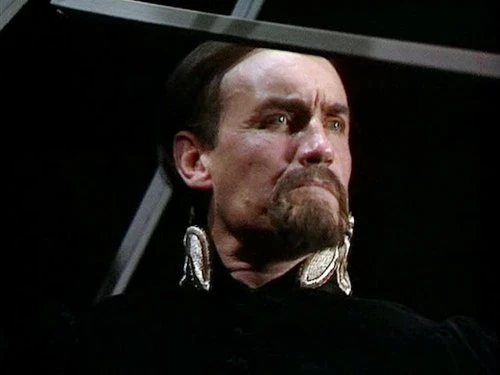
By contrast with ‘Castrovalva’ with its moments of ease – part two features a long stretch of Nyssa and Tegan’s journey to the town with accompanying harmonious pastoral music - ‘Frontios’ sees a high-stress environment where everyone is on edge all the time. It is far from cheerful and has a dark, grimy look about it where technology, including all the lights, fail. There is a deliberate sense of regression to a small, embattled community like a medieval town in a war zone evoked through archaism – the name Plantagenet, which originally referred to a royal house of England where the Anjou or Angevin dynasty reigned from the 12th to the15th centuries, and the old-style title of Warnsman.
Unlike the fake history of Castrovalva, in ‘Frontios’ there is a real history which is so recent it can be remembered. Significantly, the TARDIS Data Bank appears again but in this later serial reveals the factual situation of the colonists and what has caused them to leave Earth and settle on this new planet. At the beginning of the serial, the Doctor tells Tegan and Turlough that they cannot land and influence events as the colony is ‘too new…one generation at the most’ and that the colonists are still establishing themselves. Furthermore, amongst the colonists, Plantagenet is the direct descendant, the son, of the leader Captain Revere and the title ‘Plantagenet’, discussed above, also conjures up the notion of a dynasty.
Moreover, in ‘Frontios’ the theme of ‘deep ancestral memory’ is present. Turlough recalls the history of his planet of the Tractators invading, which has presumably been passed down through generations. Forgetting and remembering are important: Norna says to Turlough ‘You remember them’ (the Tractators) to which Turlough replies ‘We remember them. The people of my planet will never forget’. The accuracy of this memory is borne out by events in the serial, even though, unlike with the settlement of the colony, this history is not so recent that it can be remembered. In that respect it is like ‘Castrovalva’, where the first appearance we had of the Castrovalvans was of them taking place in the hunt, wearing garments which were ‘relics of [their] ancestors’. However, unlike in ‘Castrovalva’ this history detailed in ‘Frontios’ is not fake.
One of the key locations in Castrovalva is the library, along with the square, Mergrave’s pharmacy and the Portreeve’s house. Books are ‘the principal business of a library’ and a means of keeping a historical record which in this case is fake. This idea is reversed in ‘Frontios’ where Mr Range keeps a record of ‘Deaths Unaccountable’, a noir term, in a file as opposed to in a book. Unlike in ‘Castrovalva’ Range is recording fact which would otherwise disappear and there is an attempt by Chief Orderly Brazen to cover this up. At the inquest into Range’s activities, the arbiter says that they ‘all know the myths’ to which Range responds that the Doctor’s companion (Tegan) saw that myth, that she saw Plantagenet eaten by the earth.
Whereas in ‘Castrovalva’ a fake history covers up the truth about the world, in ‘Frontios’ genuine facts are covered up. In ‘Frontios’ the research room is ordered closed by Chief Orderly Brazen, on the instruction of Captain Revere in the event of his presumably ‘dying’. We are informed that Captain Revere must have known about the creatures (the Tractators) but that he did not make this information public because it would have added to the unrest of the colony. As made clear in an exchange between Range and Tegan, curiosity is dangerous on Frontios but not as dangerous as ignorance.
Logopolis was significant to universal harmony since it was designed to bring order to the universe. As in ‘Castrovalva’, in ‘Frontios’, however, there is an official narrative in an attempt to maintain order – the officers are indeed known as ‘Orderlies’. But Castrovalva had become a disordered mess where space folded in on itself in an Escher type manner.
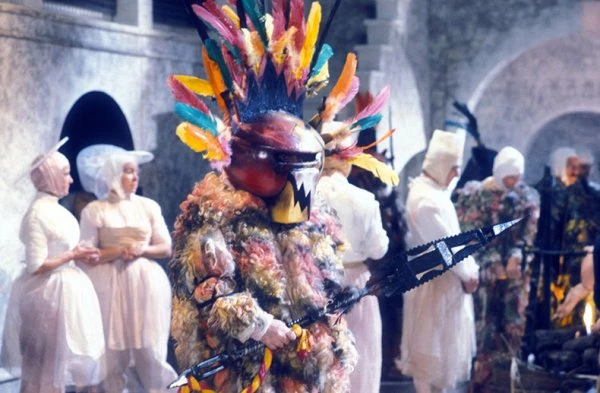
We have therefore pointed to a Bidmead signature whether intended by the author/editor or not. Even where the treatment of history and fiction differs between serials, Bidmead is still dealing with these key themes. There are other connections between the serials which have not been the focus of this article but which also point to Bidmead signatures. For example, in ‘Castrovalva’ a fantasy locale is in reality formed from hard science and in Bidmead-edited scripts like ‘Full Circle’ (1980), ‘State of Decay’ (1980), ‘Warriors’ Gate’ (1981) and ‘The Keeper of Traken’ fantasy, including gothic fantasy, and myth is drawn upon but this gives way to hard and soft science. Indeed, a common trope in serials written and edited by Bidmead is the man of science who is sceptical about his society teaming up with the Doctor – in ‘Castrovalva’ the man of learning who joins forces with the Doctor and who in this case questions reality is the librarian Shardovan but in ‘Frontios’, ‘The Keeper of Traken’ and ‘State of Decay’, for instance, the man of learning is a scientist: Mr Range, Tremas and Kalmar. There is also, for example, the idea of the doorway in ‘Logopolis’ and ‘Castrovalva’, explored differently to the gateway in the Bidmead-edited serial ‘Warriors’ Gate’. Moreover, there is the point that the TARDIS, of which Bidmead was so fascinated in ‘Logopolis’ and ‘Castrovalva’, is scattered into pieces in ‘Frontios’ but reassembled towards the end. Conversely, in Castrovalva’ the significantly named Shardovan dives into the web and the whole town, which the web was holding in balance, collapses. So ‘signatures’ are evident as in, for instance, Eric Saward’s postmodern pastiches of old Doctor Who’s which differed from Robert Holmes’ postmodern pastiches of popular culture and from Bidmead’s postmodern metafiction ‘Castrovalva’.
References
Terry Nation by Jonathan Bignell and Andrew O’Day (Manchester: Manchester University Press, 2004), ‘Periodising Doctor Who’ by Paul Booth in Science Fiction Film and Television (7: 2: 2014: 195-215), ‘The Novel, Illusion and Reality: The Paradox of Omniscience in The French Lieutenant’s Woman’ by Frederick M. Holmes in Journal of Narrative Technique (1981: 11: 3, 184-98), A Poetics of Postmodernism by Linda Hutcheon (Methuen: 1980), ‘However Improbable…’ by Philip MacDonald in Doctor Who Winter Special (1994: 4-8), ‘Metafiction: The Historical Novel and Coover’s The Public Burning’ by Raymond A. Mazurek in Critique Studies in Modern Fiction (23: 3, 1982: 29-42), ‘The talons of Robert Holmes’ by Andy Murray in David Butler ed. Time and Relative Dissertations in Space: Critical perspectives on Doctor Who (Manchester: Manchester University Press, 2007: 217-232), Image as Artifact: The Historical Analysis of Film and Television John E. O’Connor, ed. (Malabarg: Robert E. Krieger Publishing Company, 1990), ‘Bits and Pieces: Echoes of the Past in Eric Saward’s Doctor Who’ by Andrew O’Day in Tides of Time (2020: 45/46), The Portreeve by Eden Phillpotts (London: 1906), ‘Who done it': discourses of authorship during the John Nathan-Turner era’ by Dave Rolinson in David Butler ed, Time and Relative Dissertations in Space (Manchester: Manchester University Press, 2007: 176-189), ‘Paradoxical Paradise’ by Martin Wiggins in In-Vision: Castrovalva in Anthony Brown, ed. (1995: 55).
Andrew O’Day holds a PhD from Royal Holloway, University of London on Telefantasy Metafictions, which included detailed work on ‘Castrovalva’. He has since revised this thesis and completed further scholarship on ‘Logopolis’ to be found on his website at www.hrvt.org/andrewoday
Lewis Baston is a writer on elections, politics and contemporary history. He is also the author of the Black Archive study of the Doctor Who serial ‘The Sun Makers’ (2022).


